![]()
![]()
![]()
Use LEFT and RIGHT arrow keys to navigate between flashcards;
Use UP and DOWN arrow keys to flip the card;
H to show hint;
A reads text to speech;
8 Cards in this Set
- Front
- Back
|
An ordered sequence of events in the life of a cell: |
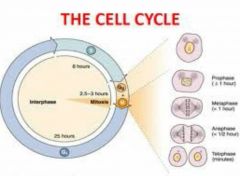
Cell cycle |
|
|
A process of nuclear division in eukaryotic cells conventionally divided into five stages: |
Mitosis |
|
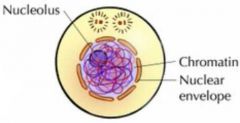
A period of cell growth and normal activity. This period comes between mitosis in the cell cycle. Cells that do not need to replicate will spend their time in this stage. If a cell does need to divide, it will copy all of it's DNA while period. This way, the cell has two complete copies of its DNA before it begins the process of mitosis: |
Interphase |
|
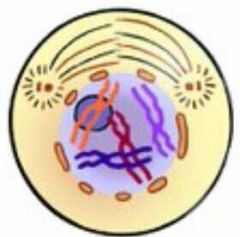
The FIRST and longest stage of mitosis. In this stage the chromosomes become visible and the centrioles separate and move to opposite poles of the cell: |
Prophase |
|
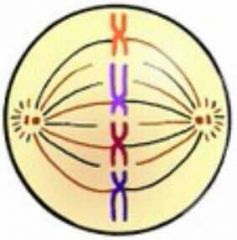
The SECOND stage of mitosis. In this stage the chromosomes line up across the center of the cell and become connected to the spindle fiber at their centromere: |
Metaphase |
|

The THIRD stage of mitosis. In this stage the sister chromatids separate into individual chromosomes and are pulled apart: |
Anaphase |
|
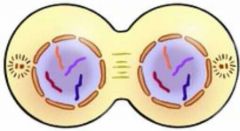
The FOURTH and last stage of mitosis. During this stage the chromosomes gather at opposite ends of the cell and lose their distinct rod-like shapes. Two new nuclear membranes then form around each of the two regions of DNA and the spindle fibers disappear: |
Telophase |
|
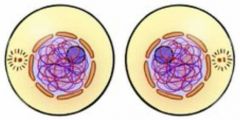
The process that follows the last stage of mitosis. With two complete copies of the DNA now in two different regions of one cell, the cell membrane will pinch and divide the cytoplasm in half. The result is two individual cells that are identical to the original cell. Each of the two new cells have a complete copy of the DNA and contain all of the organelles that the original cell had: |
Cytokinesis (Part of telophase) |

